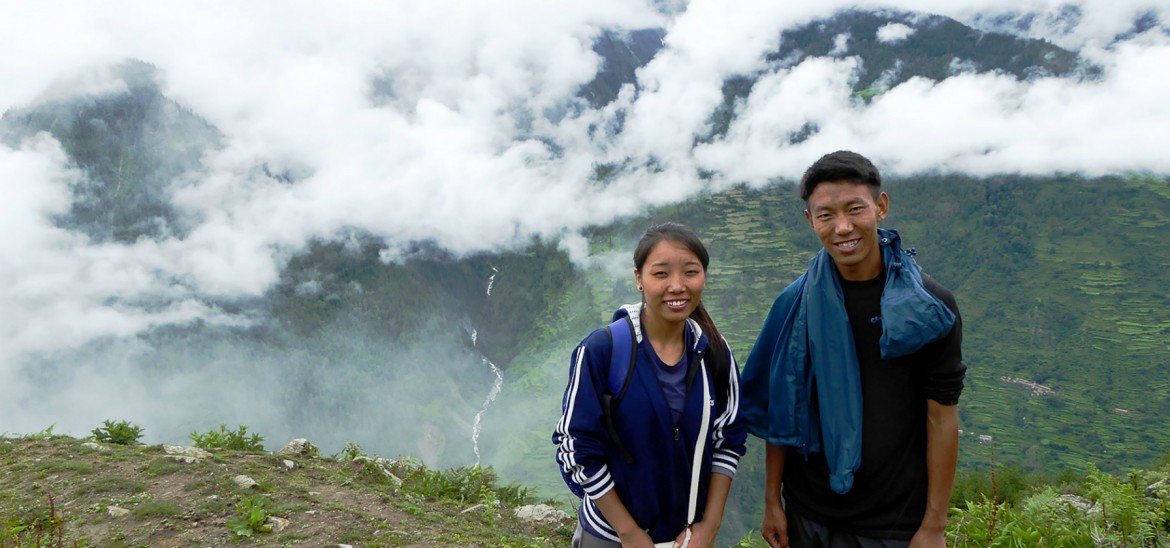Into Film Clubs
Find out everything you need to know about starting an Into Film Club.



In an age where access to education is taken for granted in some parts of the world, this visually striking documentary looks at the dangerous expeditions undertaken by Nepalese students who, after attending a school in the city, are returning home to their rural villages after over a decade away from their families.
The High Himalayan mountains of Nepal are an environmental dichotomy, at once beautiful and terrifying, a place that can be inspiring but also seems too vast and unpredictable to imagine anyone surviving there for very long. Yet, looking a little closer, there are not only people surviving but there are communities that are thriving, small clusters of families who, through multiple generations, have struggled through the harsh conditions to make the land their own. Nevertheless, the parents of the children who were born in these villages envisage a better life for their sons and daughters and are forced into making an incredibly difficult decision - to send their children, some as young as four years old, to the more metropolitan city of Kathmandu where they can get a better education. Now, over a decade later, three students face the prospect of a long, arduous journey back through the mountains, to visit their families and reconnect with their origins.
It is at this point in their story where documentary filmmakers Zara Balfour and Marcus Stephenson begin Children of the Snow Land, a chronicle of this most singular journey. Or, rather, they allow the students to partially chronicle themselves, handing over camera equipment and giving them the opportunity to tell their own stories. It is an inspired decision from the filmmakers - in an environment in which any camera is inevitably going to capture breath-taking visuals, the students, with an air of youthful profundity, lend the film a sense of intimacy that is in direct contrast to the panoramas they are surrounded by. During what has been described as "the world's longest walk home from school" they manage to form a connection with their imagined audience in a way which a camera crew simply observing them would have not allowed for. This sudden foray into rural Himalayan culture is as new to them as it is to us and we feel their excitement and trepidation in every one of their video logs.
The journeys that are taken in this film seem to exist on two planes, namely an expedition and a pilgrimage. The physical, strenuous trek, on foot through a snowy, uninhabitable wasteland gives the film a sense of scope and toil but both audience and subject know that the experience waiting at the end of their efforts will have an equally as powerful emotional impact on them. All three students (Nima, Sangpo and Tsering) speak frankly to the camera about their strong feelings of abandonment at the hands of their parents. The memories provided by Nima as he describes being dropped off at the school without his father even saying goodbye are heart-breaking. The images that begin the film, a young boy being strapped to the back of his carer whilst his mother watches in tears as he is carried from the village, are equally as affecting. However, whilst the film allows these feelings of abandonment to be emoted freely, it makes sure to explore the complex nature behind the economic reality of the situation.
Each narrative strand has a focus and allows the filmmakers to explore several different topics through the film's running time. Sangpo is frustrated and surprised by the lack of technology and poor living conditions that his family are forced to live in, raising questions about privilege and class. Tsering voices her concerns over the lack of emotion her mother shows upon meeting her again, forcing her to confront the repressive nature of their relationship. And Nima returns home to find his father is not there, the reason of which will become apparent, leaving him to consider the direction his own burgeoning life is taking. In the middle of all of this, an earthquake strikes Nepal, causing great devastation across the country. The changes happening all around these young people are beyond their control and watching them wrestle with the consequences, only to come out on top, is an incredibly inspiring, and often moving, experience.
Viewing 4 of 4 related items.

Find out more about our streaming service, designed specifically for UK schools.